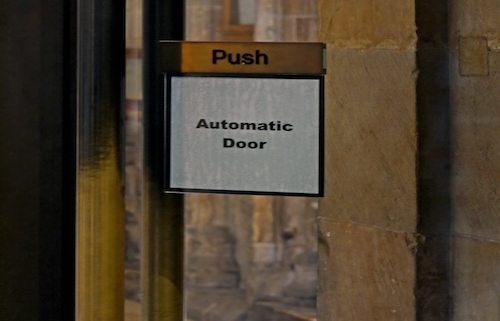Complementary Contradictions (part 3): You Don’t See What You Are Not Looking For
Sometimes, you get conflicting words of advice, one which is good and the other which is not, and it requires discernment to determine which is the right advice to follow. But often, these seeming contradictions are, in reality, complementary and, when used appropriately and in the right way, can work together to help you make better decisions. In this series of articles and podcast episodes, we are looking at different leadership ideas or principles that seem to contradict, are opposite, or at least differ from each other and pairing them up to see how they actually complement each other to make you a better leader. Last week, we explored the idea that “You see what you are looking for,” and this week, the idea that “You don’t see what you are not looking for.”
Have you ever spent hours looking for something that you lost, only to find it sometime later in an obvious and open place? I have, and it usually causes me to mutter something like, “I can’t believe I didn’t see it before, it was right in front of me!” Don’t those experiences make you wonder why you couldn’t see it in the first place? This tendency seems to reflect an idea referred to by Chabris and Simons in The Invisible Gorilla (2010) as “the illusion of attention.”
The illusion of attention is the idea that “we experience far less of our visual world than we think we do,” as Chabris and Simons state, so, “when people devote their attention to a particular area or aspect of their visual world, they tend not to notice unexpected objects, even when those unexpected objects are salient, potentially important, and appear right where they are looking.” They go on to explain that “we know how vividly we see some aspects of our world, but we are completely unaware of those aspects of our world that fall outside of that current focus of attention,”, and that “we are only aware of the unexpected objects we do notice, not the ones we have missed.”. What this all really means is that, although we believe we notice everything, especially if we are looking, we tend to miss a lot of what is right in front of us, primarily because we are not looking for that specific thing in that specific way. Therefore when I am looking for something that I have lost, without realizing it I am expecting it to look a certain way and be in a certain place, so I then overlook it when it is not in that place or it looks different than what I remember or expect; essentially, “your moment-to-moment expectations, more than the visual distinctiveness of the object, determine what you see – and what you miss.”.
The same illusion of attention takes place in the context and environment of an organization, and in ways beyond the noticing of specific physical objects. When leaders are analyzing the present culture of the organization, planning for the future, or trying to identify issues and opportunities, it can be very easy to look around or look ahead with an unconscious expectation of what you will see; the result is that you will likely see what you are looking for but will miss what you are not looking for, and not even realize it. There may be an opportunity to tap into someone’s strength or ability, there may be an idea or a new method developing in a department, or there may be a problem that needs to be addressed, but because you are not looking for it, you miss it. And when you miss it, you may lose an opportunity or create greater difficulty.
So how do you open your eyes to see more of what you might otherwise miss? I remember a number of years ago the popularity of 3D optical illusions (also called stereograms) – pictures that looked like flat geometric patterns, but when you stared into the picture and allowed your eyes to relax and un-focus, looking beyond the flat image, a 3-dimensional image would appear. There was more to the image than the first look revealed, but it required intentional effort and a different way of looking. In the same way, when you are leading an organization, there must be intentional effort to see, and to see beyond what is in front of you or what you are expecting to see. How do you do that?
- First, recognize our tendency to not see what we are not looking for.
- Then, remove any expectations of what you think you might see.
- After that, you can work at zooming out and zooming in – trying to step back and take a wide-angle look at everything, then looking at more specific details, then stepping back for a wide-lens look again, and so on.
- Finally, you can also try to look through different eyes, by trying to see through the approach or perspective of other people or other angles.
It’s fairly easy to miss things that you are not looking for. I’ve done it when I was trying to introduce a new change that I assumed everyone would get behind, and because of what I was therefore expecting to see (their support), I only saw the examples of support and completely missed the grumbling from those who were resisting. You could probably guess that this eventually created difficulty in the change implementation because I had failed to see it and address it early. I looked, but I didn’t see because I was only looking for what I expected to see. So, as Chabris and Simons said, “looking is not sufficient for seeing”; because our tendency is to only see what we are looking for, it takes a conscious effort to see things that you are not looking for.
Chabris, C., and Simons, D. (2010). The Invisible Gorilla: How Our Intuitions Deceive Us. MJF Books: New York, NY.





